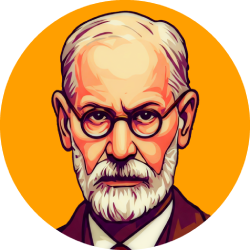Hello, I am João Barros, psychoanalyst and writer. I am here to explore with you a fascinating theme: the first use of the term “psychoanalysis” in official publications. This journey will lead us to better understand how psychoanalysis has developed over the years and how it has become an important part of our understanding of the human mind.
Introduction to Psychoanalysis
Psychoanalysis, as a discipline, emerged in the late nineteenth century with Sigmund Freud. He is considered the father of psychoanalysis and was the one who coined the term “psychoanalysis” to describe his method of treatment and theory about the human mind. The central idea of psychoanalysis is that our thoughts, feelings and behaviors are influenced by unconscious processes.
This approach revolutionized the way we understood mental health and psychological disorders. Before psychoanalysis, mental conditions were often seen as a result of demonic possessions or moral weaknesses. Psychoanalysis brought a more scientific and human perspective to these issues.
The historical context
In the late nineteenth century, medicine and psychology were going through a period of great transformation. The discovery of microorganisms as a cause of infectious diseases and the development of Charles Darwin’s theory of evolution strongly influenced the way scientists thought about the human body and mind.
In this context, Freud began to develop his ideas about psychoanalysis. He was particularly interested in understanding and treating conditions such as hysteria, which at the time had no clear explanation. Through his studies and clinical work, Freud formulated concepts such as the unconscious, the repression and the Oedipus complex.
The first use of the term “psychoanalysis”
The term “psychoanalysis” was first used by Freud in his book “The Interpretation of Dreams”, published in 1900. However, it was in his subsequent articles that he actually developed and popularized the concept. One of the first public uses of the term can be found in his talk “on psychoanalysis”, given in 1909 at Clark University, in the United States.
This talk was a crucial moment in the history of psychoanalysis, as it marked Freud’s first contact with an American audience and helped spread his ideas beyond Europe. From that moment on, the term “psychoanalysis” began to be more widely used in official publications and scientific congresses.
Subsequent impact and development
The impact of psychoanalysis on society was deep. It not only changed the way we understood mental health, but also influenced art, literature and philosophy. Authors such as James Joyce and Virginia Woolf incorporated psychoanalytic elements into their works, while philosophers like Jacques Lacan developed theories based on Freud’s ideas.
In addition, psychoanalysis has led to the development of other therapies, such as cognitive behavioral therapy and humanistic psychology. These approaches share the idea that the understanding of the human mind is crucial to the treatment of psychological disorders, but differ in the way they address the therapeutic process.
Nowadays, psychoanalysis remains an active area of research and clinical practice. Although it has evolved significantly since Freud’s days, its contribution to our understanding of the human mind remains invaluable.
In conclusion, the first use of the term “psychoanalysis” in official publications marks a point of inflection in the history of psychology and medicine. Through the work of Freud and his followers, psychoanalysis has become an important force in the way we understand and treat mental health.


